
Wall Street Meat
by
Andy Kessler
Published 17 Mar 2003
See initial public offerings (IPOs) Iraqi invasion of Kuwait, 120 Island (ECN system), 199–200 Jackson, Al, 73, 79 Jacob, Ryan, 183 Jain, Naveen, 214 Janus, 173 Japan, sanctions against, 62–63 Jarrett, Jim, 18, 32 Jett, Joseph, 81 Jobs, Steve, 16–17 Johnson, Robel, 13, 31, 36, 55–56 Jordan, Michael, 68 JP Morgan, 45 junk bonds, 53, 103–4, 118 Kansas, Dave, 182, 183, 201 Kapoor, Ram, 148 Karlgaard, Rich, 146 Kassan, Alan, 154, 157 Kelleher, John, 13 Kelly, George, 102, 123, 125, 126, 128, 155 Kerschner, Ed, 22, 41–42, 45, 52, 71 Kerschner-Pradilla model, 41–42 Kessler, Andy as analyst at Paine Webber (intro), 5–18 in Far East, 150–52, 233 as hardware and software analyst, 127–29 Institutional Investor listing, 79–81, 143 and Mary Meeker, 132–36, 152 media coverage of, 63–64, 67 recruitment by Morgan Stanley, 84–87 reputation of, 243, 246 as strategist, 153–54 251 Index Kessler, Andy (continued) TheStreet.com and, 182–83, 200–202 Velocity Capital Management and, 170–71, 180, 191–94 Kidder Peabody, 79–81 King, Don, 78–79 King, Larry, 144 Kiniry, Tony, 116 Kittler, Fred, 45, 83, 170–71, 191–94 Koogle, Tim, 169 Kravis, Henry, 201 Kravis Kohlberg and Roberts, 118 Kurlak, Tom, 17, 75, 143 Kuwait, invasion of, 120 Lahar, Dave, 74 Lazlo, John, 75 Lee, Charles, 39 Leeson, Nic, 234 Lendl, Ivan, 68 Lerach, William, 198–99 Levenson, John, 139 leveraged buyouts (LBOs), 53, 103, 118 Levine, Josh, 197–98, 199 Liberty Media, 212 Limit Order Display Rule, 198 liquidity, 199, 231 lockups, 201–2 Lockwood, Mike, 56, 57, 69, 71 Lotus, 100 LSI Logic, 19, 26 252 Lycos, 168 Lynch, Peter, 59 Mack, John, 130, 136, 223 Madden, Mike, 80, 81 Magellan fund, 59 “make a market,” 195–96 Malone, John, 210, 212 Mandl, Alex, 210–11, 212 market duration, 21–22 market indexes, 172–73 market offers, 80–81, 86 market transitions, 105 Marron, Don, 38, 39–40, 86 Martin, Eff, 139 Matsushita, 156 McClelland, Carter, 85, 100, 101 169 McDermott, Tom, 13, 23–24, 31, 44, 49, 52, 62, 71, 82, 230 McGraw-Hill, 39 McInerney, Jay, 39–40 Mediavision, 162, 223 Meeker, Mary, 1, 132–36, 140–41, 146, 152, 155, 157, 159–61, 164, 166, 171, 203, 218, 226, 231, 242 media coverage of, 185, 186 Netscape and, 167 Mendelson, Jim, 100, 101, 110, 113, 119, 123, 127, 130 Mendelson risk, 108–9 Merrill Lynch, 130, 184–85, 225–26 Metcalfe, Bob, 214–15 Metzler, Bob, 105, 113, 115–16, 125, 142 Index microchip companies, 143–44 Microcosm (Gilder), 204 Micron Technology, 61 Microsoft, 100–101, 105, 127–29 Milken, Michael, 53 Mlotok, Paul, 88, 121–23 models, 41–42, 111 moles, 238 momentum funds, 147, 168, 173, 185–86, 191, 213–14 Monash, Curt, 11, 43, 78, 81 Montgomery Securities, 126 Moore, Gordon, 17 Morgan Stanley, 1, 24–25, 74 Amazon.com and, 174 analysts’ compensation at, 136 bonus time, 109–10 Kessler hiring, 84–87 price targets and, 92–93 research and, 91–92 and Salomon Brothers scandal, 130 Silicon Graphics and, 161 technology analysts at, 187–88 Morris, Chip, 128 Mosaic Communications, 166 Motorola, 36, 57, 60, 124–25, 204–5 Mueller, Jack, 96, 98, 105–7 Mullins, Keith, 148–49, 218 Muratore, Carol, 74, 100, 110 Murdoch, Rupert, 154 Murtaugh, John, 76 mutual funds, 172–73 IPOs and, 189 momentum funds, 147, 168, 173, 185–86, 191, 213–14 Nacchio, Joe, 212, 217, 220 NASDAQ Market-Makers Antitrust Litigation, 198–99 Neenah Foundry, 30 Netscape, 116, 166–67 New York Times, 62 Nightline, 63–64 Noyce, Bob, 17 oil production, during Kuwait war, 121–23 one hundred phone calls a month program, 47 Operation Desert Storm, 125 options, pricing, 200 out of the money calls, 34 Owens Illinois, 118 Ozyjowski, Ray, 66 Pacific Microelectronics, 127 Paine Webber acquisition of Kidder Peabody, 81 reaction to crash of 1987, 73–74 Palma, Joey, 58 Pangia, Bob, 74 Parekh, Michael, 175 Parkinson, Joe, 61 Paul, Skip, 156–57 personal computers, 100 Pets.com, 180 Pilgrim, Gary, 146, 172–73, 224 253 Index Pilgrim Baxter, 146–47 Pitino, Rick, 68 PMC-Sierra, 127 Preston, Michele, 16, 133 price-earnings ratio infinite P/E, 31–32 multiple, 21–22 Priceline.com, 180 price targets, 92–93, 182 profit statements, 90 Quartner, Doug, 95, 103 Quattrone, Frank, 1, 74, 85, 93, 100–102, 108, 114–15, 126–27, 129, 130–32, 145–46, 154–56, 157–59, 163–64, 242, 244 Amazon.com and, 174–75 boutique within a bulge bracket, 221–24 civil charges pending, 231 CS First Boston and, 179–80 Deutsche Bank and, 169–71, 178–79 “friends of Frank” accounts, 190, 222 Mary Meeker and, 135, 155, 166, 171 Netscape and, 166–67 Synopsys and, 139 Qwest, 219, 220, 221 254 Real Networks, 175, 177 Redstone, Sumner, 154 Reed, John, 227 registered representative Series 7 test, 53–54 Regulation Fair Disclosure, 229 Reingold, Dan, 116–17, 151 reputation, 231, 237–41, 244 research and development, 104 research-only operation, 200–204 reverse conference, 119 Rieper, Alan, 17, 75, 166 Roach, Steve, 122, 153, 204 Robertson Stephens, 168 Rosen, Ben, 14, 24–25, 72–73, 99, 100, 140 Ruvkun, Rick, 101–2, 120, 123–24, 127, 222 Safeguard Data Systems, 148 Safeway, 118–19 Salomon Brothers, 130, 216 Sanders, Jerry, 144–45 Santoro, Carm, 44 Sarbanes-Oxley bill, 229 Sculley, John, 16–17, 146, 155, 207 Sebulsky, Alan, 131 Securities and Exchange Commission (SEC), 54, 197–98 Limit Order Display Rule, 198 Regulation Fair Disclosure, 229 Small Order Execution System, 72, 197–98 Index sell-side firms, 25 Sequoia Capital, 169 Series 7 registered representative test, 53–54 Sheinberg, Sid, 157 Sherlund, Rick, 128 Shirley, Jon, 100–101, 128 Sierra Semiconductor, 83, 102, 126–27 Silicon Graphics, 161, 165 Silicon Systems, 44 Simplot, JR, 61 Sims, Calvin, 60, 62–64 small-cap analyst, 148 Small Order Execution System (SOES), 72, 197–98, 231 Smith, Steve, 6, 11, 20, 43, 51, 66–67, 74–79 Sorell, Michael, 96 Sperry Univac, 55–56 spinning, 184, 189 Spitzer, Eliot, 225, 228, 229, 245 Sprint, 39 Standard and Poor (S&P) 500 index, 172, 173 stock(s) becoming the “ax” in, 35 future earnings of, 20–21 value, determining, 20–21 stock market crash of October 1987, 71 growth-over-value era, 105 Strandberg, Steve, 93, 102, 114 Sullivan, Scott, 220, 227 Synopsys, 139 T.
…
Underneath the surface, however, changes in how Wall Street was paying for analysts would change the game in subtle ways. Some of it had to do with those over-the-counter traders not answering their phones. Wall Street got sued for not answering phones and the SEC insisted the Street put in a system known as Small Order Execution System, SOES. This automated execution of small orders would lead to day traders and would eventually lead to automated trading systems known as ECNs. These ECN trading systems would represent over half of overthe-counter trades by 2001, with commissions a hundredth of what they had been in 1987.
…
So we had successfully cut off analysts and salesmen, and now, with Instinet, traders as well. What did we need Wall Street for? · · · Remember that scene of the market crash in 1987, and traders not answering their phones? It started a bunch of dominoes falling. The Securities and Exchange Commission insisted on the implementation of a system called SOES, or Small Order Execution System. Trades under 1000 shares would be executed automatically at the current market price. Two smart programmers, Jeff Citron and Josh Levine wrote an MS/DOS program on their PC that could game the SOES system, electronically sending in rapid-fire trades to pick off 197 Wall Street Meat over-the-counter traders.
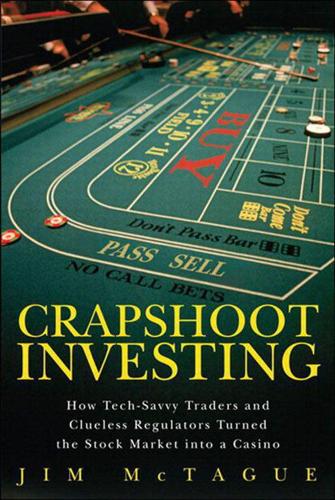
Crapshoot Investing: How Tech-Savvy Traders and Clueless Regulators Turned the Stock Market Into a Casino
by
Jim McTague
Published 1 Mar 2011
They’d often display quotes at a favorable price and then, when a trader placed an order with them over the telephone—which was the preferred way they did business in those days—they’d announce that the price had changed. Since 1984, NASDAQ had had in place an electronic trading system so that it could guarantee small investors who sent their orders through registered brokers instantaneous executions up to 500 shares. The Small Order Execution System, or SOES, made it more difficult for market makers to pull a bait and switch the way they could over the telephone. SOES seldom was used, however, primarily because not many customers knew of its existence. Following Black Monday, the National Association of Securities Dealers (NASD), reacting to shrill complaints from customers who had been unable to execute as the market plunged, passed rules obligating the market makers to offer firm quotes.
…
., 113-122 Murphy, Eddie, 29 mutual funds, ETFs (exchange-traded funds) versus, 232 N Nagy, Chris, 8, 225 naked puts, 127-128 naked short selling, banning, 47-59 naked sponsored access, 226 Nanex, 200 Narang, Manoj, 152-156 NASD (National Assocation of Securities Dealers), 102 regulation after Black Monday (October 19, 1987), 136-137 NASDAQ on Black Monday (October 19, 1987), 133 initial public offerings (IPOs), 142-144 investigation of price fixing, 139 modernization of, 33 Regulation NMS changes to, 21 regulation of ATSs (Automatic Trading Systems), 139-144 SOES (Small Order Execution System), 136-138 National Association of Securities Dealers. See NASD National Market System, 116, 145 New York Board of Trade, 28-30 New York Mercantile Exchange, 28-30 New York Stock Exchange. See NYSE Niederauer, Duncan, 172 Nixon, Richard, 101 Nordson Corp., 185 NYSE (New York Stock Exchange) Black Monday (October 19, 1987), 131-132 capital crisis of 1969-70, 105-111 curbs on trading, 22 flash orders, avoiding, 42-43 modernization of, 33-34 reaction to Flash Crash, 78 Regulation NMS changes to, 21 regulation of ATSs (Automatic Trading Systems), 139-144 volume declines in, 146-147 NYSE Euronext, 168 NYSE Market Regulation, merger with NASD, 102 O O’Brien, William, 42, 84 O’Malia, Scott, 63, 83, 202 Obama, Barack, 50, 53, 81, 100, 209 OCT (Order Confirmation Transaction), 138 Oesterle, Dale, 146 oil spill in Gulf of Mexico (Deepwater Horizon), 67 OMX exchange, 33 Order Confirmation Transaction (OCT), 138 “Outside the Box” blog (Maulden), 234 overclocking, 158 overcorrelation of investor behavior, 177 Overdahl, James, 197 P Pacific Stock Exchange, 33 A Perfect Storm (Junger), 67 Peterson, Kristina, 176 Phelan, John, 126 Philadelphia Stock Exchange, 33 Phillips, Susan, 101 pinging, 20-21 Pipeline Trading LLC, 173 portfolio insurance, 130-131 Prechter, Robert, 125, 130 predatory trading, strategies for avoiding, 12-13 price fixing, NASDAQ investigation of, 139 pricing structures, decimal pricing, 144 principles-based systems, 28 public relations efforts of high-frequency traders, 150 puts, naked puts, 127-128 Q–R Quants, high-frequency trading versus, 157-160 Quinn, Jack, 53 quote stuffing, 200, 203 Rakoff, Jed, 103 Reagan, Ronald, 83, 102, 128-129 recession.
…
See Congress servers, collocating, 17, 22, 34 Shell, Adam, 214 short selling, banning naked short selling, 47-59 Silver, Jeff, 163 SIPC (Securities Investor Protection Corporation), 62, 109, 115 Sloan, Alfred P., 14 small investors in capital crisis of 1969-70, 105-111 sniping, 161 SOES (Small Order Execution System), 136-138 Sorathia, Mohammed, 231 Special Trust Fund, origins of, 108-109 speed, role in high-frequency trading, 166 Spiders, 76 Spielberg, Steven, 49 Spitzer, Eliot Laurence, 189-191 spoofing, 18 Steel, Bob, 100 stock exchanges, creating competition, 116-118. See also equities exchanges stock-picking, volatility and, 177 stop loss orders, 75-76 stub quotes, 75-76 Summers, Larry, 81 T target date funds, 230 Thain, John, 99 ticker.
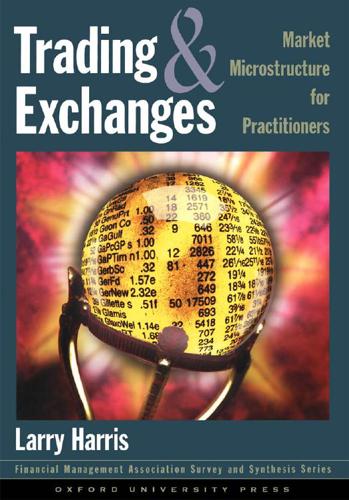
Trading and Exchanges: Market Microstructure for Practitioners
by
Larry Harris
Published 2 Jan 2003
See Securities Investor Protection Corporation size, 5, 69, 281, 282, 398, 399, 530–31 size precedence, 117, 333 Sizzler International, 444 SLKC. See Spear, Leeds, Kellogg and Co. slogans, 525 slow price adjustment scenario, 373 small float, 255 Small Order Execution System (SOES; Nasdaq), 14–15, 106, 391, 532 smoothing, 469–70 social welfare function, 204, 205 SOES. See Small Order Execution System SOES bandits, 391 soft commission, 153–54 soft dollar, 153–54, 191 soft prices, 69 soft quotes, 280–81 soybeans, 181, 356 SPDR (Standard & Poor’s Depository Receipt), 249, 504 Spear, Leeds, Kellogg and Co. (SLKC), 19–20 specialist participation rate, 500 specialists, 494–513 affirmative obligations, 496–98 assignment of, 509–10 as auctioneers and exchange officials, 501 as brokers, 500–501, 508 control of market quotes, 504–5 cream-skimming strategies, 503 and dealers, 279, 496–99, 508–9 definition of, 494 and market open, 508, 509 negative obligations, 198–99, 500 New York Stock Exchange, 298, 494, 495, 496, 500, 510 participation rates, 502 privileges, 501–9 quote-matching strategies, 502–3 regulatory issues, 510–11 and Rule 80A, 580 speculative strategies, 501–2 and stop orders, 503–4, 505–8 in U.S. stock markets, 48 specialist trading systems, 494, 495–96 specialization, 215 special settlement instructions, 85 specified price benchmark methods, 422, 423–27 speculative arbitrages, 356–63 speculative margins, 61 speculators, 6, 46, 177, 221–75 and bluffers, 265–67 definition of, 5, 181, 190, 194, 200, 206 and prediction of performance, 442 as profit-motivated traders, 194–95, 196, 206 speech recognition technology, 108 speed of execution, 515 Spider.
…
Since borrowing shares is sometimes difficult or impossible, the broker would have to arrange to borrow the shares before Jennifer could sell them. The broker enters Jennifer’s order into his order entry system and reads it back to her. When Jennifer confirms the order, he releases it. If the brokerage firm does not deal in Microsoft, its order entry system will send the order to the Nasdaq Small Order Execution System (SuperSoes). If the brokerage has a trader who is a Nasdaq dealer in Microsoft, the broker will probably send the order to that trader. FIGURE 2-2. Page 1 of a Nasdaq Level II Quotation Montage for Microsoft Common Stock Source: Reuters SuperSoes routes the order to one of the Nasdaq dealers.
…
Time precedence, in conjunction with an economically significant minimum price increment, helps protect exposed orders by making front-running strategies less profitable. * * * ▶ SOES Banditry Some markets have rules designed to exclude parasitic traders. The response of the Nasdaq Stock Market to SOES banditry illustrates this approach. SOES bandits were traders who used the Nasdaq Small Order Execution System (SOES) to submit orders designed to profit from very short-term price changes. The losers generally were Nasdaq dealers who adjusted their quotes a few seconds too slowly. These dealers naturally complained vociferously. These high-speed trading strategies ultimately caused spreads to widen because dealers and other traders had to recover from other traders what they lost to the SOES bandits.
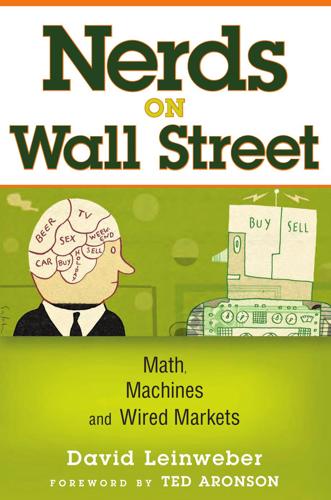
Nerds on Wall Street: Math, Machines and Wired Markets
by
David J. Leinweber
Published 31 Dec 2008
It was designed to free specialists and traders from the nuisance of 100-share market orders. The NASDAQ market, started in 1971, used computers to display prices, but relied on telephones for actual transactions until 1983 with the introduction of the Computer Assisted Execution System (CAES), and the Small Order Execution System (SOES) in 1984. Simultaneous improvements in market data dissemination allowed computers to be used to access quote and trade streams. The specialists at the NYSE had a major technology upgrade in 1980, when the specialist posts themselves, which had not changed since the 1920s, were made electronic for the first time, dramatically reducing the latencies in trading.
…
See Electronic Data Gathering, Analysis and Retrieval system Edison Electric Institute, 331 Edison, Thomas, xiv, 18 efficient markets hypothesis, 95–97, 208, 211 Warren Buffett on, 96–97 Electric Power Research Institute, 328, 331, 332 electricity market commonalities with financial market, 328–329, 336–337 market mechanisms, 336–337 electronic communication network, 33, 41 algo wars, 70, 78–79 See also DOT, NASDAQ, NYSE, SuperDOT Electronic Data Gathering, Analysis and Retrieval system, 51, 60, 217–218 electronic execution system Computer Assisted Execution System, 66 Small Order Execution System, 66 See also DOT, MarketMind, QuantEx electronic trading. See MarketMind, QuantEx, electronic execution system electricity market - Bits, Bucks and BTUs, 337–339 EMH. See efficient markets hypothesis energy conservation, 330–337, 339–340 early technologies, 334 innovation, 330–336 smart meter, 334–336 ENIAC, 23–24 Enron, 218, 328 SEC filings and, 52–53, 219–220 Warren Buffett on, 291 EPRI.
…
See synthetic collateralized debt obligation Schneiderman, Ben, 46, 246–248 SEC, 52–56 filings traffic analysis, 219–220 Form 10-Ks, 218–219 pre-news and, 216–218 secondary equity offering, 117, 127 Index sector analysis, 127 semantic Web, 84, 216, 218 SFI. See Santa Fe Institute SGML, 60 Sharpe ratio, 80, 92, 193 Sharpe, Bill, 38, 98, 122, 130, 155 Shaw, David, 40–41, 67 short portfolio, 120–123 SIC. See Standard Industrial Classification Small Order Execution System, 66 smart meter, 334–336 Smartmoney.com, 46–47 Smith,Vernon, 47 Snider, Steve, 40, 146 social media, 205. See also blog, collective investing, message board SOES, 66 software agent, 85, 216, 234 specialist. See market maker spider, 52–53 Standard Industrial Classification, 52, 240 stock manipulation examples “Heard on the Street”, 260 Aastrom Biosciences, 262–263 Amsterdam 1600’s, 256 Dutch tulip bulb, 228 fast-trades.com, 267–268 Gerno Corporation, 263 Information Management Associates, 263–264 NEIP, 254–255, 265–267 PairGain Technologies, 262–263 stock message board, 56, 205, 237–242 manipulation of See NEIP stock split, 117, 119, 124–126 stock ticker – invention of, 18 stratified sampling, 112–115 informed, 114–115 351 stupid engineering tricks, 287–290 stupid financial engineering tricks, 290–299 SuperDOT, 66 synthetic collateralized debt obligation, 293–294 synthetic index fund, 123 TARP.
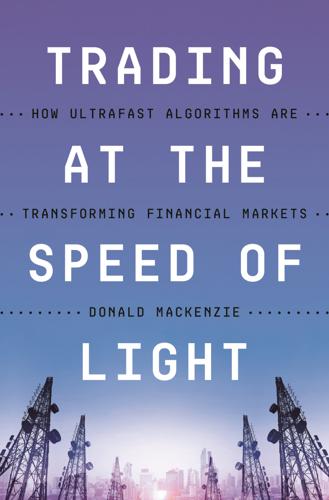
Trading at the Speed of Light: How Ultrafast Algorithms Are Transforming Financial Markets
by
Donald MacKenzie
Published 24 May 2021
Once accepted into membership, a sufficiently well capitalized firm could then register with the NASD as a market-maker for one or more stocks. Only then did a firm get the Level III access, via a Nasdaq terminal, needed to post bids and offers on Nasdaq’s screens. To trade without that access, even a firm that was a member of the NASD generally had to either strike a deal by telephone with a market-maker or use Nasdaq’s Small Order Execution System (SOES, set up in 1982), via which a member firm could send an order for a thousand shares or fewer from a retail customer—that is, a member of the general public—to a market-making firm to be executed automatically at the price the market-maker was quoting on-screen. In a period in which the minimum unit of price for US shares (and thus the minimum spread between the prices at which a market-maker would buy a stock and sell it) was still an eighth of a dollar, being a Nasdaq market-maker was a profitable business.
…
A tiny breach had opened up in this fixed-role system.10 “Among the despised” The breach was in Nasdaq, and it was created, quite inadvertently, by the stock-market regulator, the SEC. During the October 1987 stock-market crash, many Nasdaq dealers, fearing continuing precipitous price drops, stopped processing sell orders (mostly originating from individual investors) sent to them via SOES, Nasdaq’s automated Small Order Execution System. The dealers thus in effect refused to honor their on-screen bids to buy shares. After the crash, the SEC successfully pressured the National Association of Securities Dealers to make it obligatory for its members to fill SOES orders at the prices they were displaying on Nasdaq’s screens (Ingebretsen 2002: 99–100).
…
See market taking lit markets, 227 LMDS (Local Multipoint Distribution Service), 161–62 machine learning, 8, 187 market-impact trading, 188–89 market making, 13, 30, 172–81, 182, 193 market structures, 109–110 market taking, 13, 15, 30, 181–88, 193–94 Marxism, 14 Matchbook, 129 material political economy, 10–23, 206–7 McKay Brothers, 150–53, 158, 161–62, 184–85 Meade, Robert, 150 Melamed, Leo, 28–29, 38, 39f, 40, 42, 45–46, 48, 49; death threats against, 46–47, 54 Menkveld, Albert, 239–40 microwave wireless transmission, 146–54 MiFID I (Markets in Financial Instruments Directive), 100 MiFID II, 258n5 millimeter wave transmission, 157–61 Minex, 126, 127 money-making, 17 Morgenson, Gretchen, 94 MTS, 120, 121 mundane, 17, 223; defined, 245n23 Muniesa, Fabian, 27, 241 Nasdaq, 75–76, 94, 96, 165, 250n13, 254n19; NQ, 56, 92–93; Pathfinders, 212, 259n7; SOES (Small Order Execution System), 80–84 New Jersey, 7f, 154–60 New Line, 150 New York Stock Exchange (NYSE), 19, 70–74, 91, 96, 207–8; Central Certificate Service, 95 options, 204–5 order books, 18–19, 18f, 74f, 97–98, 97t, 109t, 172, 173f; access to, 211–12; feathering of, 198, 254n6 Osipovich, Alexander, 229–30 Ouch, 89 packets, 167–68 paperwork crisis, 70, 95, 210, 220 Pardo Guerra, Juan Pablo, 27, 241 ParFX, 199 Persico, Mike, 155 Philippon, Thomas, 21, 22f, 246n30 Pilosov, Alex, 147–50 pip, 252n12 pit trading, 36f, 43–45, 46, 57, 60–61 politics, 15–16 QQQ , 56 Quantlab Financial, 163–64 queue positions, 177–78 quote-lock timers, 258n37 quote-matching, 189–90 Rabobank, 261n28 racks, 137, 252n1 rain, effects of, 151, 154, 157, 159, 184–85 randomization, 199–200 rebates, 201, 257nn31 and 32 Reg NMS, 95–96, 178–79, 216–17, 218, 258n35 regulation, 26, 33–37, 93–94, 217–221 rents, 22–23 Reuter Monitor Dealing, 124, 125–26 Reuters, 49, 124–25, 199–200, 257n27 RMJ Securities, 111 Salomon Brothers, 111 Scorex, 249n6 Securities Acts Amendments 1975, 71, 95, 220 Securities and Exchange Commission (SEC), 30, 71, 218, 219; 1998 Regulation ATS (Alternative Trading Systems), 94; 2014 Reg SCI, 230 Serpico, Don, 50–51 Seyfert, Robert, 242 Shannon, Claude, 253n17 shares, 131, 209, 210, 215, 217–18 Shkilko, Andriy, and Konstantin Sokolov, 184 Siebert, Muriel, 249n3 signals, 97, 131–34, 132t, 139–40, 211; defined, 8 Smith, Neal, 28–29, 40 social studies of finance, 10, 17, 125, 240–41 sovereign bonds, European, 120–23, 131 spatial location, 11, 12, 30, 169–70, 234 speculative triggering, 168–69 speed, 155, 183; of light, 4, 11–12 speed bumps, 201–5, 257n33 speed races, 21, 102, 140, 183–84, 225–26, 226–27, 231, 233, 240 spoofing, 133, 190–92, 191f, 214–15, 220–21, 239, 256n18 Spread Networks, 142–47 SPY, 61, 183, 229, 248n27 Standard & Poor’s (S&P) 500, 53–54 swaps, 220, 259n16 sweeps, 189 Swiss Options and Financial Futures Exchange, 57 Tamarkin, Bob, 38 Tett, Gillian, 228 ticks, size of, 177, 248n27 Timber Hill, 243n3 time.

Broken Markets: How High Frequency Trading and Predatory Practices on Wall Street Are Destroying Investor Confidence and Your Portfolio
by
Sal Arnuk
and
Joseph Saluzzi
Published 21 May 2012
The money garnished comes directly from investors, who pay more for stocks they buy and receive less for stocks they sell. HFT latency arbitrage has as its roots the predatory trading of past market structures. In the late 1980s and 1990s, a group of trading participants, collectively called SOES Bandits, was notorious for picking off market makers that were too slow to update their quotes. SOES stood for Small Order Execution System, which the bandits abused. Ironically, SOES was designed to help retail investors get trades done in a timely fashion. SOES Bandits spooked market makers, with the result being wider spreads to compensate for the risk of getting picked off by the bandits. SOES Bandits were a bane on capital markets in those times.
…
While Washington spent years trying to make NASDAQ “more fair,” the wide spreads resulted in innovative, free market solutions. That took the form of rapid volume growth on new electronic communication networks (ECNs), as well as opportunistic use of an automated execution system call the Small Order Execution System, otherwise known as SOES, that was put in place after the crash of 1987. SOES During the 508-point crash on October 19, 1987, when the Dow Jones Industrial Average dropped 22.6%,3 many brokers did not answer their phones. Investors were livid. SOES, which was developed years prior, was mandated by NASDAQ in 1988 for broker dealers to redress the injustice.
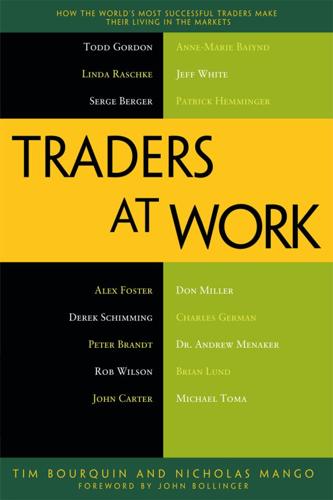
Traders at Work: How the World's Most Successful Traders Make Their Living in the Markets
by
Tim Bourquin
and
Nicholas Mango
Published 26 Dec 2012
There’s a lot of energy that’s required to operate at that level, so from a trading lifestyle point of view, I knew eventually I would have to make a change. That frenetic pace every day can really start to wear you down. Bourquin: Most day traders, when you talk about the early days of day trading, they started out on SOES [Small Order Execution System] and NASDAQ stocks. But you started out trading NYSE stocks. Why? Gordon: The “SOES bandit” style of trading was popular a few years before I got into the markets. Dave Floyd did a lot of NASDAQ trading in the office in San Diego before I was hired. He was very active in the NASDAQ. I think Dave would tell you, his office had a couple of days where their volume alone represented more than 5 or 10 percent of the volume traded on the QQQs.
…
(LEN) Lund, Brian daily charts day trading double-bottoms, ascending triangles economic announcements gambling and trading analogies gap trader high-frequency trading hybrid trader intraday charts larger swing chart moving average news announcement new traders part-time equities trader price and volume poker table positions profit target risk-reward ratio ROI percentage scale in and scale out Stanley, Morgan stocks basket support and resistance levels swing chart swing trading TC2000 technical analysis trading chat room trading mindset trading/poker analogies true traders weekly trade M Menaker, Andrew adverse effect algos auction automated trading Bollinger Bands fundamental analysis hedge fund high-frequency trading market profiling market sentiment momentum trading NYSE TICK psychological consultant risk-reward ratio S&P 500 social context supply and demand support and resistance trading psychology trend days volume occurrence volume profiling VWAP Miller, Don bankruptcy claims breakeven analysis CME member discounted rate schedule E-mini and S&P futures E-mini market ETF fluid market fund manager futures account futures contract futures market holding time human emotion intraday Jellie program jellyfish liquidity under bid under market provider liquid vehicles MACD market cycle market reading market trend market value MF Global account debacle momentum money back moving average PFG single trade speculation stabilization benefit support and resistance technical analysis technical charts Three-Line Break trade journal trading equities trading style vulture funds wholesale Money Talk bulletin boards Morgan Stanley (MS) Moving average convergence/divergence (MACD) N, O NASDAQ and S&P 500 National Futures Association (NFA) New York Stock Exchange (NYSE) Nonfarm payrolls (NFP) P, Q Pacific Coast Stock Exchange Peregrine Financial Group (PFG) Philadelphia Stock Exchange Poker analogy Producer Price Index (PPI) Purchasing Managers Index (PMI) R Raschke, Linda bear flags bond pit bull flags complex mechanical systems complex trade management strategies computer models CTA programs education E-mini S&P 500 futures futures market gamma trade hedge funds internet connections learning curve market maker market risk monetary goals multiple positions options arbitrage pit traders position exit pricing options professional traders S&P pit scale short-term scalpers software programs technical analysis technical chart technical programs trading floor trading place trail stops volatility and liquidity Russell 2000 S Schimming, Derek CCYX currency markets currency traders double tops and double bottoms entry point fifteen-and twelve-pip charts financial instrument fundamental background Monet effect money trading nonfarm payrolls announcement price-action players price-analysis view price-charting tools short-term time frame spot Forex trading stop loss support and resistance swing/position trader technical analysis trade opportunity trading strategy Simple moving average (SMA) SimplerOptions.com Small Order Execution System (SOES) T TheStockBandit.com Toma, Michael algorithmic program trading amateur trader arbitrary stop average retail trader backtesting bond future bond trader bond volume charts data-driven analytics edge effective journaling EMA and WMA E-mini S&P futures (ES) contract trader trade set-up equity index trader fund managers futures market trader HFT MACD market profile midday doldrums missing trade monthly assessment monthly report paper trading professional trader profit target psychology quantitative trader risk management risk/reward ratio secretariat set-up setups short-term trader six-tick stop player stop level support and resistance sweet spot technical analysis ten-year treasury bill trade plan trade targets trading software Trade on MasterCard TradeTheMarkets.com U US Department of Defense and Navy V Volume minus down volume ( UVOL-DVOL) Volume-weighted average price (VWAP) W, X, Y, Z Wealthy traders habits blown-up accounts buying and selling chart right side reading current trading methods decision making experienced traders goat milk good news higher-priced stock independent traders losing position make-my-month market bias market edge market makers minority ranks moving averages naked charts patient trade position size predict movement profit/loss exit retail traders right market environment share size short-term trade spot chart stock price support and resistance technical analysis trade setup trading books trading judgment trading plan trading reversals trading rules Weighted moving average (WMA) White, Jeff bear market bull market correlation daily market analysis entry and exit points equities trader favourable days full-time trading golf playing hedge fund home-based trading impatient traders local broker market environment mid-2000 mutual funds new investor own trading part-time trader playing chicken price and volume professional traders pullback buyers range-trading strategy retail firm swing trading time frames trade plan trading day structure trend lines wealth building wealthy traders Wilson, Rob ambition Bollinger bands British Royal Navy commander currency pairs currency trading economic announcement equity curve EUR/USD currency Forex trading full-time trader gold standard leverage losing trade management fees military training moving averages one-minute chart part-time traders pilot trade price points reinvest stop loss struggling trader support/resistance swings tend time frames trade margin trading bug trading unit volatile swings Wisdom of Crowds World Agricultural Supply and Demand Expectations (WASDE)

Irrational Exuberance: With a New Preface by the Author
by
Robert J. Shiller
Published 15 Feb 2000
After competitive brokerage commissions were mandated by the Securities and Exchange Commission (SEC) in 1975, there was an immediate drop in commission rates, and discount brokers came into being. Technological and organizational changes were also set in motion. Such innovations as the Small Order Execution System, introduced by NASDAQ in 1985, and new order handling rules issued by the SEC in 1997 have resulted in ever lower trading costs. SEC regulations encouraging equal access to the markets have now spawned a growing number of amateur investors who can “day trade,” that is, try to make profits by rapidly trading stocks using the same order execution systems used by professionals.
…
See also Momentum Shafir, Eldar, 140, 146, 240n31 Sharpe, Steven, 31, 238n7, 239n19, 262n31 Shefrin, Hersh, 253n1 Sherman Antitrust Act, 102 Shining Path, 126 Shleifer, Andrei, 144, 237n1, 253n1 Short sales, 180, 226 Siegel, Jeremy, 176–77, 178, 179, 192, 193–94 “Silly Putty Economy” (Cohen), 74 Simonson, Itamar, 140 Simpson, O. J., 29 Singapore, 5 Singh, Manmohan, 126 Slovic, Paul, 142 Small-firm effect, 183, 184 Small Order Execution System, 39 Smart money, 172–75 Smith, Edgar Lawrence, 193 Smith, Vernon, 244n22 Smoot, Reed, 85–86 Smoot-Hawley tariff, 84–86 Social influence, 149–51 Socialism, 211 Socially based variations, 164–65 Social Security, 208, 214, 218, 220–22, 265n15 Soviet Union, 21 Spain, 4 Speculative bubbles, xii–xiii, xvi, 5, 44, 60–64, 132, 204; bursting of, 61, 114–17; dividend-price ratio and, 182, 183; efficient markets and, INDEX 177–78; excess volatility and, 190; feedback theories of, see Feedback systems; financial crises and, 130; intrinsic, 182; investor perceptions of, 62–64; media and, 71, 95; monetary policy and, 222–24; as naturally occurring Ponzi processes, 67; negative, see Negative bubbles; new era thinking and, 98, 118; overconfidence and, 144, 146; policy and, 232–33; Ponzi schemes as models of, 64–67; trade expansion and, 228–30; trade interruptions and, 225–28; word-of-mouth communications and, 157, 162, 228 Stagflation, 116 Standard and Poor’s (S&P) Composite Stock Price Index, 5–6, 7, 20, 50, 194; bull market of 1920s and, 187; bull market of 1950s/1960s and, 181; bull market of 1990s and, 182; drop from 1929 to 1958, 9; media and, 76, 80 Standard and Poor’s (S&P) 500 Index, 177 Standard and Poor’s (S&P) 500 Strips, 229 Stanley, Thomas, 50 Statman, Meir, 59 Stein, Jeremy, 255n19 Sterling, William, 28 Stock Market Crash–-And After, The (Fisher), 106, 262n4 Stock market crash of 1907, 94, 224 Stock market crash of 1929, 6, 47, 50, 58–59, 73, 106, 138, 226; investment trusts following, 35; news during, 82–88; stabilizing attempts prior to, 224 Stock market crash of 1974, 7, 181, 215 Stock market crash of 1987, 46, 58, 59, 73, 138, 226; France and, 128; news during, 88–95; overconfi- IN D E X dence and, 145–46; word-ofmouth communications and, 155 Stock market crash of 1989, 77–78 Stock market peak of 1901, 9, 181, 194; end of, 114–15; new era thinking and, 99–103.

How We Got Here: A Slightly Irreverent History of Technology and Markets
by
Andy Kessler
Published 13 Jun 2005
Nonetheless, the rules and regulations are still designed to protect the stodgy boys’ cozy trading world, and provide the biggest impediment to funding new ventures in the U.S. *** Wall Street has always salivated over small investors, the suckers who pay big spreads without realizing that they are getting 200 HOW WE GOT HERE ripped off. In 1985, the NASDAQ programming wizards cooked up a system called Small Order Execution System, or SOES, so small investors could automatically get trades of 1000 shares or less executed. Almost no Wall Street firm used it. Why bother? Why automate a process when someone on the phone could squeeze out a bigger spread? But on October 17, 1987, known as Black Monday, the markets crashed, and traders refused to answer the phone.

Flash Boys: A Wall Street Revolt
by
Michael Lewis
Published 30 Mar 2014
Many hours later he’d clawed his way back to the 1987 stock market crash, which, as it turned out, gave rise to the first, albeit crude, form of high-frequency trading. During the 1987 crash, Wall Street brokers, to avoid having to buy stock, had stopped answering their phones, and small investors were unable to enter their orders into the market. In response, the government regulators had mandated the creation of an electronic Small Order Execution System so that the little guy’s order could be sent into the market with the press of a key on a computer keyboard, without a stockbroker first taking it from him on the phone. Because a computer was able to transmit trades must faster than humans, the system was soon gamed by smart traders, for purposes having nothing to do with the little guy.† At which point Schwall naturally asked: From whence came the regulation that had made brokers feel comfortable not answering their phones in the midst of the 1987 stock market crash?

High-Frequency Trading: A Practical Guide to Algorithmic Strategies and Trading Systems
by
Irene Aldridge
Published 1 Dec 2009
According to Leinweber (2007), designated order turnaround (DOT), introduced by the New York Stock Exchange (NYSE), was the first electronic execution system. DOT was accessible only to NYSE floor specialists, making it useful only for facilitation of the NYSE’s internal operations. Nasdaq’s computer-assisted execution system, available to broker-dealers, was rolled out in 1983, with the small-order execution system following in 1984. While computer-based execution has been available on selected exchanges and networks since the mid-1980s, systematic trading did not gain traction until the 1990s. According to Goodhart and O’Hara (1997), the main reasons for the delay in adopting systematic trading were the high costs of computing as well as the low throughput of electronic orders on many exchanges.
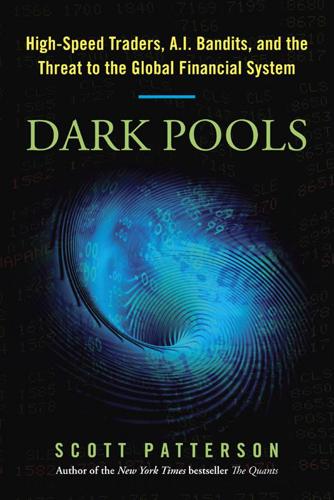
Dark Pools: The Rise of the Machine Traders and the Rigging of the U.S. Stock Market
by
Scott Patterson
Published 11 Jun 2012
Left with a ravaged portfolio, Houtkin asked Maschler if Datek would liquidate the rest of his holdings, a thankless and not particularly profitable job. Maschler, who needed all the business he could get, said yes. Months later and somewhat back on his feet, Houtkin told Maschler he’d discovered curious loopholes in a Nasdaq system that processed small trades from everyday mom-and-pop investors. Called the Small Order Execution System, or SOES, it allowed the brokers for small investors to place orders directly with market makers through a computer system. No phone calls necessary. Implemented in 1985, SOES was rarely used at first. Most market makers traded over the phone or used a computer system called SelectNet, which displayed bids and offers on a screen and allowed traders to place orders through a window on their terminals, much like a primitive instant message system.

file:///C:/Documents%20and%...
by
vpavan
Because spreads were narrower on Instinet, it was the market of choice for mutual funds and other institutional investors. But it was off limits to individuals. It was also off limits to day traders, folks who weren't dealers but acted like them by trading stocks all day long, searching out small ticks in price from which they could profit. They often used a Nasdaq network called the Small Order Execution System, or SOES. SOES was set up in 1984 to give small investors quick execution for orders up to 1,000 shares. Since the 1987 market crash, when individual investors were unable to get their brokers on the phone and Nasdaq market-makers failed to honor their quotes, marketmakers have been required to fill orders that come to Nasdaq via SOES.
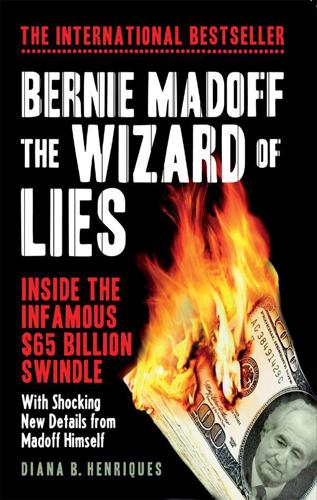
Bernie Madoff, the Wizard of Lies: Inside the Infamous $65 Billion Swindle
by
Diana B. Henriques
Published 1 Aug 2011
Later, NASD leaders would argue that NASDAQ’s technology failures were overstated in a government study of the 1987 crash. 84 Mike Engler, Madoff’s friend and associate in Minneapolis, would tell his son later: Telephone interview in 2010 with Steven Engler. 85 only seven losing months: Morningstar data compiled for the author. 85 the expectation that they would be rolled over year after year: Second BLM Interview. 85 “I felt they weren’t sham transactions”: First BLM Interview. 86 an influential voice in putting NASDAQ back together: As chairman of one of the key committees looking at automated order flow, Bernie Madoff was one of the men the media sought out for comment. On Nov. 16, 1987, the newsletter Securities Week headlined the news that the NASD board was ready to vote on four items to improve market making. The story noted: “The first item on the plate will require all OTC market makers to participate in the NASD’s small order execution system (SOES), according to Bernard Madoff, chairman of the SOES committee and founder of the New York broker/dealer bearing his name.” 86 the consequences of the NASD’s flabby discipline: The NASDAQ market’s own official history later acknowledged that traders soon learned how to use the rhythm of posting and boosting their quotes on the newfangled automated system to manipulate stock prices in old-fashioned ways. 86 a new standard for speed in handling customer orders: In its issue of July 10, 1989, Forbes took note of how revolutionary the Madoff system was by describing the system’s automatic purchase of some proffered shares of IBM: “Once the computer has that IBM stock it just bought, it shows the trader various ways of hedging his position and the costs.